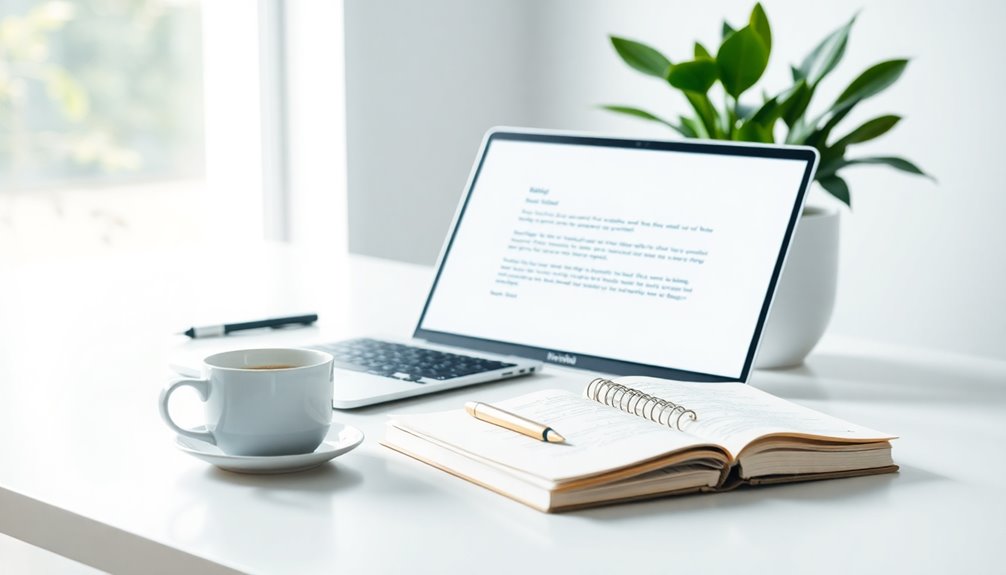To write a clear and polite email to your teacher, start with a specific subject line that summarizes your message. Begin with a respectful greeting, addressing your teacher properly, and introduce yourself with your full name and class. Keep your message brief and focused, ideally 3-4 sentences, and express gratitude for their time. Use bullet points for multiple questions to enhance readability. Finally, conclude with a polite sign-off, including your contact information. Following these steps will ensure effective communication, and there's more helpful advice and examples that can guide you even further.
Key Takeaways
- Use a specific subject line that clearly indicates the purpose of your email to ensure quick identification.
- Begin with a respectful greeting, addressing the teacher by their title and last name to show professionalism.
- Introduce yourself with your full name and class to provide context for your inquiry or request.
- Keep the message concise, ideally 3-4 sentences, focusing on one main topic for clarity.
- Express gratitude for the teacher's time and efforts both at the beginning and end of your email.
Introduction

Writing an email to your teacher can feel daunting, but it doesn't have to be. By following a few simple guidelines, you can craft professional emails that convey your message clearly and politely.
Start with a specific subject line that reflects your email's purpose; this helps your teacher prioritize and understand your message quickly.
In the opening, use a respectful greeting and introduce yourself. Include your full name and class to establish context—this makes it easier for your teacher to recognize who you're at a glance.
When writing, keep your message brief and to the point, respecting your teacher's time. A few concise sentences are often enough to get your point across effectively.
Establishes Clear Communication Expectations
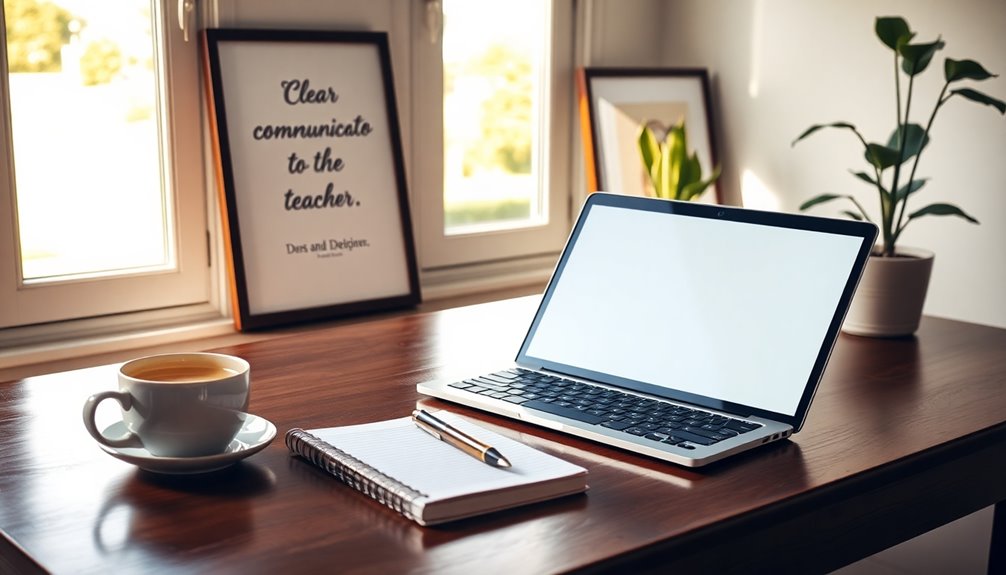
Clear communication expectations set the stage for effective interactions with your teacher. When writing emails, starting with a clear subject is crucial. This helps your teacher quickly understand the purpose of your message, allowing them to prioritize their response.
Introduce yourself right away by including your full name and mentioning your class. This context helps your teacher know who you're and why your inquiry matters.
Keep your email concise and focused on one main topic. This reduces confusion and enables your teacher to respond more quickly.
A polite and respectful tone throughout your message is essential for building a positive relationship. This makes your teacher more likely to assist with future inquiries.
Subject Line Clarity
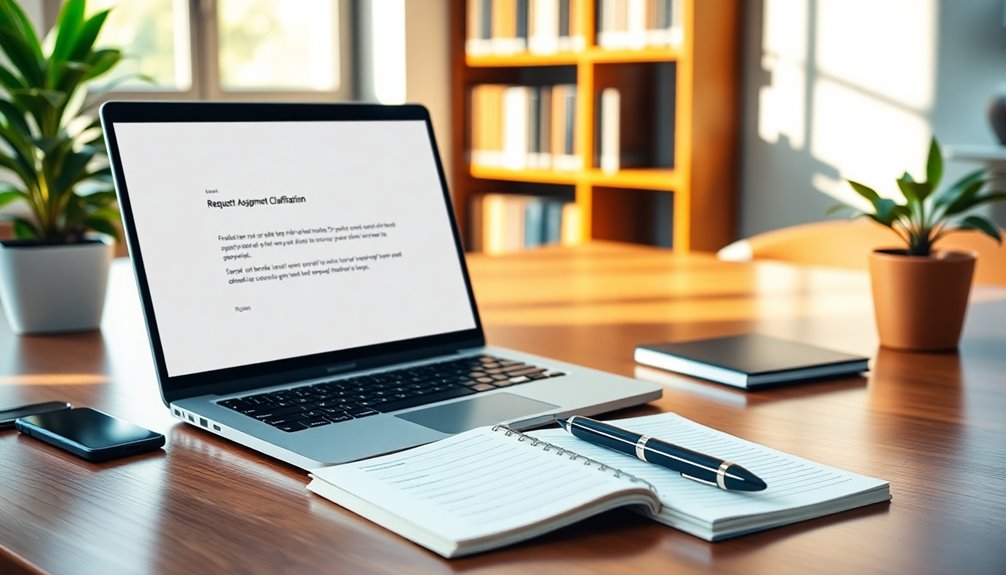
An effective subject line can make all the difference in your email to a teacher. You want to ensure your subject line clarity is spot on, as it provides immediate context and helps your teacher prioritize their emails. A specific subject line, like "Biology 101: Question about Lab Report", clearly indicates the purpose of your message. This specificity aids in quick identification and response.
Aim for concise subject lines, ideally under ten words, to keep things clear and easy to read. Avoid vague phrases; instead, use detailed subjects that directly relate to your inquiry or request. For example, "Request for Extension on History Essay" is an effective subject line that immediately communicates what your email is about.
When you craft a proper email with a well-thought-out subject line, you significantly increase the likelihood of a prompt response from your teacher. Remember, a clear, concise subject line not only helps your teacher but also reflects your professionalism and consideration.
Step-by-Step Guide to Writing Clearly

Crafting a well-structured email is essential for effective communication with your teacher. Start with a clear subject line that states your email's purpose, like "Question about Biology Lab Report." This grabs your teacher's attention right away.
Next, open your email with a respectful greeting, using the appropriate title and the teacher's last name to set a professional tone.
In the first paragraph, introduce yourself by stating your full name and class information. This context helps your teacher understand who you are.
When writing the body of your email, keep it concise. Aim for 3-4 short sentences, and if you have multiple questions or topics, use bullet points to enhance readability. Additionally, consider establishing clear savings goals to ensure you manage your time and expectations effectively in your communication.
Dos and Don'ts for Teacher Emails
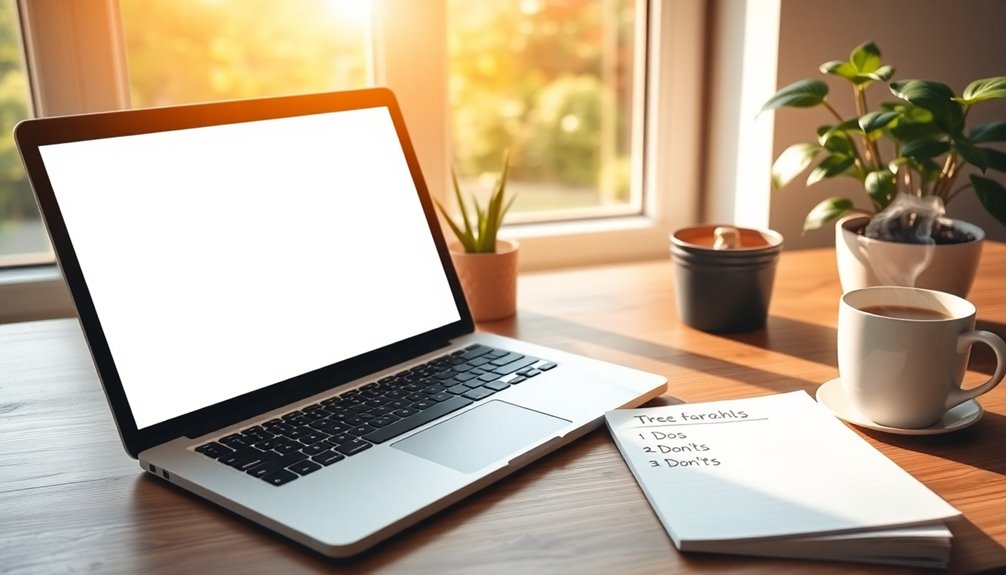
Finally, express gratitude at both the beginning and end of your email.
A simple acknowledgment of the teacher's effort and time fosters a positive communication atmosphere and shows respect.
Remember these dos and don'ts when you email a teacher, and your correspondence will likely be received positively!
Examples of Student-Teacher Emails
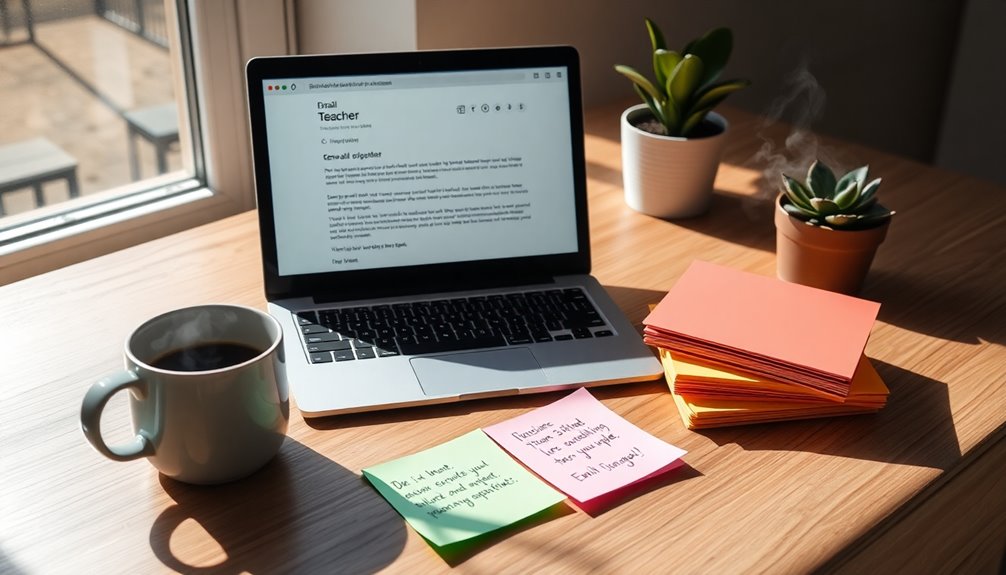
Before signing off, express gratitude. You might say, "Thank you for your time and help!"
Lastly, proofread your email to avoid any spelling mistakes, ensuring it reflects professionalism. Additionally, consider how intelligent tutoring systems can support your learning, as they provide personalized feedback that could be beneficial in your studies.
Close your email with "Best regards" followed by your name. Remember to include your email address in case your professor needs to reach you directly.
Following this structure can lead to a more productive and respectful exchange with your teacher.
Pro Tips for Writing Effective Emails
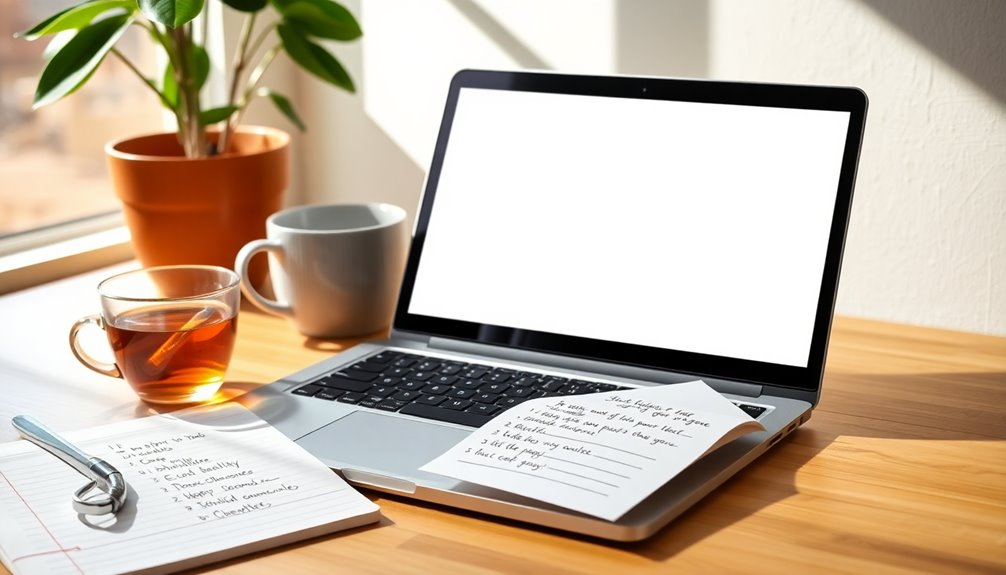
Writing effective emails to your teacher can significantly enhance communication and help you get the responses you need. To start, make sure to use a clear and specific subject line that conveys the purpose of your email. This improves the likelihood of a timely response.
When sending an email, begin with a respectful greeting, using the correct title and spelling of your teacher's name; it shows professionalism.
Keep the body of your email concise. Aim for just 3-4 sentences focused on your main request or question. If you have multiple questions, utilize bullet points for clarity and organization, making it easier for your teacher to respond effectively.
Also, remember to appreciate your teacher's time. Always conclude with a polite closing, expressing gratitude for their assistance. This not only reinforces a respectful tone but also encourages positive communication.
Final Thoughts

Effective communication with your teacher is essential for a successful learning experience. When you write an email, start with a clear subject line that summarizes your message. This helps your teacher quickly grasp the purpose and increases the chance of a timely response.
Always begin with a casual greeting, like "I hope this email finds you well," to set a positive tone.
To ensure your message is understood, follow your full thoughts with clarity. Provide as much relevant information as necessary, but remember to keep your email concise—ideally under 150 words. A concise email respects your teacher's time and makes it easier for them to respond effectively.
Throughout your message, maintain a respectful tone and professional language. This fosters a positive relationship with your educator.
Don't forget to express gratitude at both the beginning and end of your email. A simple "Thank you for your time" or "I look forward to your response" can go a long way.
Frequently Asked Questions
How Do I Send a Respectful Email to a Teacher?
To send a respectful email to a teacher, start with a clear subject line that summarizes your purpose.
Use a formal greeting, addressing them by their title and last name.
Introduce yourself briefly, mentioning your full name and class.
Be polite throughout, using phrases like "please" and "thank you" to express gratitude.
Keep your message concise, focusing on the main points to respect their time.
This approach shows your professionalism and consideration.
How Do You Write a Clear and Professional Email?
To write a clear and professional email, start with a specific subject line that summarizes your purpose.
Use a proper greeting to address the recipient respectfully.
Introduce yourself briefly to provide context, then get straight to your point without unnecessary details.
Keep your language polite and concise.
Finally, wrap up with a courteous closing, thanking them for their time.
This approach ensures your message is understood and appreciated.
How Do You Write a Polite Letter to a Teacher?
To write a polite letter to a teacher, start with a clear subject line that reflects your message.
Use a formal greeting like "Dear Mr. Smith."
Introduce yourself briefly, mentioning your full name and class.
Keep the body concise, focusing on one specific topic, and use courteous language, such as "Could you please help me with…"
End with a thank you for their time, and sign off with your full name for clarity.
How Do You Write a Formal and Polite Email?
To write a formal and polite email, start with a respectful greeting, like "Dear [Recipient’s Name]."
Clearly introduce yourself and state your purpose early on. Keep your language courteous, avoiding slang or overly casual expressions.
Focus on one topic to maintain clarity, and be concise with your message.
Conclude with a polite sign-off, such as "Thank you for your attention," followed by your name.
This approach ensures professionalism and respect throughout your email.





